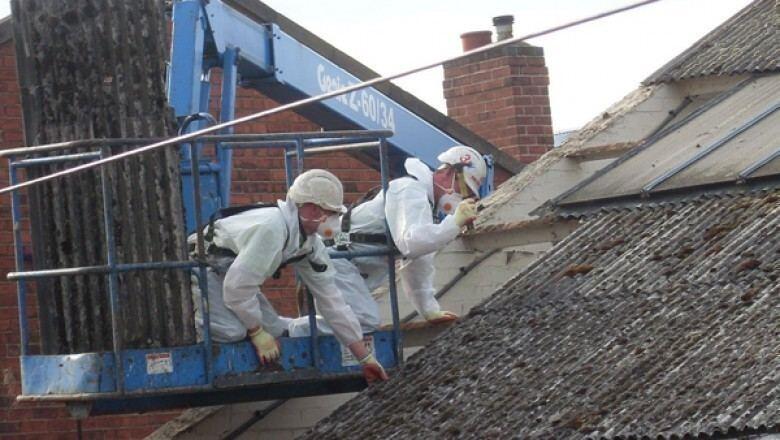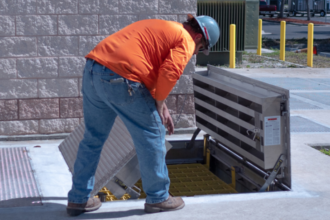Installing a new roof is one of the most significant home improvement projects a homeowner can undertake. A well-installed roof not only enhances your home’s curb appeal but also protects it from harsh weather conditions and contributes to its long-term structural integrity. However, roof installation often raises many questions, from understanding the right materials to knowing how to prepare for the process. By gaining clear answers to common concerns, you can make informed decisions, avoid costly mistakes, and ensure your investment stands the test of time. We will explore some of the most frequently asked questions about roof installation so you can approach the process with clarity and confidence.
Common Questions About Roof Installation and Their Answers
1. How do I know when it’s time to replace my roof?
Recognizing the right time for a roof replacement can prevent extensive damage to your home. Common signs include curling or missing shingles, visible leaks, water stains on ceilings, sagging roof sections, or excessive granules in your gutters. In some cases, roofs may still look intact but could be nearing the end of their expected lifespan, which varies depending on the material used. Asphalt shingles often last 20 to 25 years, while metal and tile roofs can last significantly longer.
Even if no visible damage exists, a professional roof inspection—especially when considering New Roof Installation in Kansas City—can reveal underlying issues like moisture buildup or weakened decking. Waiting too long to replace a failing roof can lead to more extensive repairs, including structural damage. By addressing roof issues promptly, you protect your home’s interior, preserve its value, and ensure the comfort and safety of everyone inside.
2. What roofing material should I choose?
The material you choose will influence your roof’s durability, appearance, and maintenance needs. Asphalt shingles are a popular choice for their affordability and wide range of styles. Metal roofs are valued for their longevity and resistance to severe weather, while tile roofs offer unmatched elegance and exceptional durability. Wood shakes and shingles provide a natural aesthetic but require more upkeep, and slate roofs deliver both longevity and beauty, though they can be heavier and more expensive. Your climate, budget, and desired architectural look all play a role in this decision. For example, in areas prone to heavy snowfall, materials with strong load-bearing capacity are ideal. In regions with intense sun exposure, reflective roofing materials can improve energy efficiency. Considering the long-term performance and maintenance needs of each material will help ensure your choice aligns with your home’s requirements and your personal preferences.
3. How long does the roof installation process take?
The timeline for roof installation depends on factors like your home’s size, the roofing material selected, weather conditions, and the complexity of the project. On average, a standard asphalt shingle roof for a single-family home can be installed in one to three days. Metal or tile roofs, due to their weight and detailed installation requirements, can take several days to over a week. Weather plays a critical role, as rain, high winds, or extreme temperatures can delay the process. Roofers also consider safety measures and quality checks during each stage, which may extend the timeline but ensure a stronger, longer-lasting result. Homeowners can prepare by clearing the driveway for material delivery, securing pets indoors, and protecting valuable items in the attic from dust and debris. Understanding the process helps set realistic expectations and reduces stress during installation.
4. Will a new roof increase my home’s value?
A new roof is often considered a strong return on investment for homeowners, particularly if you plan to sell your home in the near future. Potential buyers view a new roof as a major selling point because it eliminates the need for immediate repairs and signals that the property has been well-maintained. The value increase depends on factors like the material you choose, the quality of the installation, and the current market conditions. In addition to boosting curb appeal, a new roof can improve energy efficiency by providing better insulation and ventilation, which can help lower heating and cooling costs. This added functionality can further enhance your home’s appeal to buyers. While the exact percentage of increased value varies, a professionally installed roof often offers one of the highest returns among home renovation projects.
5. How much should I budget for roof installation?
Roof installation costs vary based on your roof’s size, the material selected, the complexity of the design, and labor rates in your area. Asphalt shingles are generally the most affordable, while premium materials like slate, metal, or clay tile can significantly increase costs. Additional expenses may include removing the old roof, repairing damaged decking, upgrading insulation, or installing improved ventilation systems. Some homeowners are surprised by these extra costs, so it’s essential to request a detailed written estimate that outlines all components of the project. Investing in quality materials and skilled labor may have a higher upfront cost but typically results in fewer repairs and longer service life. Setting aside a contingency budget—around 10% to 15% of the total estimate—can help cover unexpected expenses during installation. Careful financial planning ensures you’re prepared for the entire scope of the project without compromising quality.
A roof installation is more than just a construction project—it’s a long-term investment in your home’s safety, efficiency, and appearance. By understanding the most common questions homeowners have, you can make confident, informed choices throughout the process. From recognizing when it’s time for a replacement to choosing materials, setting a budget, preparing your home, and committing to ongoing maintenance, every decision plays a role in the final outcome. With the right planning and knowledge, you can enjoy a smooth installation experience and a durable, attractive roof that protects your home for years. Taking the time to learn now ensures peace of mind later.













